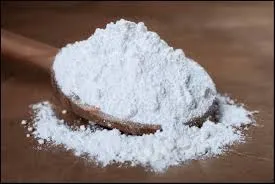
e172 food additive
The Impact of E172 Food Additive A Comprehensive Overview
Food additives play a crucial role in modern food processing and preservation. Among these additives, E172—also known as iron oxides—often raises questions among consumers regarding its safety, functionality, and potential health implications. This article aims to provide an insightful overview of E172, its uses, regulations, and concerns surrounding its consumption.
What is E172?
E172 encompasses a range of iron oxide pigments that serve as colorants in various food products. These pigments can appear in various forms, including black, red, and yellow, and are commonly utilized to enhance the visual appeal of foods such as confectioneries, baked goods, and processed snacks. The vibrant colors not only make the products more enticing but also help in differentiating between different flavors or varieties.
Uses of E172
In addition to its application in food products, E172 is widely used in cosmetics, pharmaceuticals, and even construction materials. In the food industry, its primary function revolves around improving product appearance and stability. The iron oxides are considered stable and non-reactive, meaning they do not change color or degrade under various conditions, making them reliable additives for manufacturers.
Safety and Regulations
E172 is approved by several food safety authorities, including the European Food Safety Authority (EFSA) and the U.S. Food and Drug Administration (FDA). These agencies have conducted extensive research to ascertain the safety of iron oxides in food applications. According to their findings, E172 is considered safe for consumption within the established limits.
e172 food additive

The acceptable daily intake (ADI) has not been specifically established by the EFSA; however, the amount typically used in food products is well below levels that could pose any health risk. The regulatory stance is backed by animal studies and human clinical data that have not shown significant adverse effects associated with normal consumption.
Health Concerns
Despite its safety approval, some consumers express concerns regarding the consumption of food additives, including E172. The potential for allergic reactions or sensitivities can vary from person to person, although such cases are rare with iron oxides. Additionally, certain individuals may prefer to avoid synthetic additives for various personal or health-related reasons, leading to an increased demand for natural or organic products.
Another point of contention is the long-term effects of consuming additives like E172. Although current research indicates no significant risks, the cumulative effects of various additives over a lifetime of consumption remain a topic of scientific inquiry. Consumers are encouraged to maintain a balanced diet rich in whole foods to mitigate any potential risks associated with additives.
Conclusion
E172, or iron oxides, is an integral food additive that serves primarily as a colorant, enhancing the appearance of a variety of food products. Regulated by significant food safety authorities, E172 is considered safe for consumption when used within established limits. While there may be concerns about food additives among certain consumer groups, the extensive research to date supports the safety and utility of E172.
As the food industry continues to evolve, transparency concerning food additives will play a critical role in consumer choices. Individuals are encouraged to stay informed about food labeling and ingredient lists to make educated decisions regarding the products they consume. Understanding the role and safety of additives like E172 can help demystify modern food processing and empower consumers in their dietary choices.
-
Pure Sodium Dichloroisocyanurate Dihydrate | Powerful DisinfectantNewsAug.29,2025
-
Industrial Chemicals: Quality & Purity for Every IndustryNewsAug.28,2025
-
Nitrile Rubber Honoring Strict Production StandardsNewsAug.22,2025
-
Aspartame Ingredients Honoring Food Safety ValuesNewsAug.22,2025
-
Fertilizer for Balanced Plant NutritionNewsAug.22,2025
-
Cyanide Gold Processing with High Purity AdditivesNewsAug.22,2025
-
Formic Acid in Textile Dyeing ApplicationsNewsAug.22,2025
Hebei Tenger Chemical Technology Co., Ltd. focuses on the chemical industry and is committed to the export service of chemical raw materials.
-

view more DiethanolisopropanolamineIn the ever-growing field of chemical solutions, diethanolisopropanolamine (DEIPA) stands out as a versatile and important compound. Due to its unique chemical structure and properties, DEIPA is of interest to various industries including construction, personal care, and agriculture. -

view more TriisopropanolamineTriisopropanolamine (TIPA) alkanol amine substance, is a kind of alcohol amine compound with amino and alcohol hydroxyl, and because of its molecules contains both amino and hydroxyl. -

view more Tetramethyl Thiuram DisulfideTetramethyl thiuram disulfide, also known as TMTD, is a white to light-yellow powder with a distinct sulfur-like odor. It is soluble in organic solvents such as benzene, acetone, and ethyl acetate, making it highly versatile for use in different formulations. TMTD is known for its excellent vulcanization acceleration properties, which makes it a key ingredient in the production of rubber products. Additionally, it acts as an effective fungicide and bactericide, making it valuable in agricultural applications. Its high purity and stability ensure consistent performance, making it a preferred choice for manufacturers across various industries.





